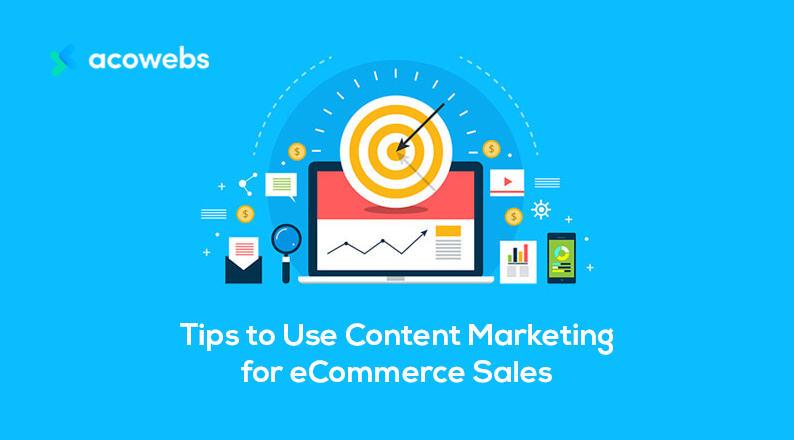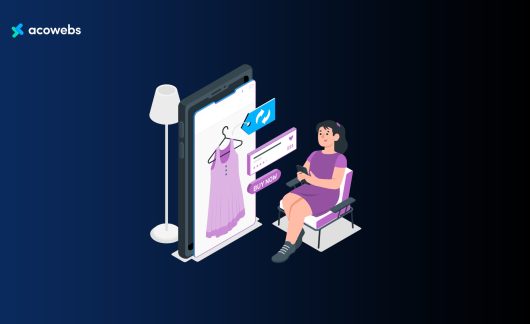Content marketing is one of the most common concepts in the eCommerce space today. Almost every online business is using one variant of content marketing or another, with 91% of B2B companies reporting that they use the strategy to drive conversions.
Indeed, according to research by the Content Marketing Institute, the most successful B2B outlets spend 40% of their marketing budget on content marketing.
Your customers expect more from your eCommerce store than simply selling a product. You need to engage with them, share relevant and valuable content, build trust, and commit to solving their problems or meeting their needs.
However, your competitors already know this strategy and are executing highly advanced content marketing plan.
To set yourself apart, you need to adopt a differentiation strategy. In this article, you will learn more about content marketing, its benefits, and 8 applicable tips to use content marketing for eCommerce sales.
What is Content Marketing?

It is the process of creating and distributing relevant, valuable, and consistent content to engage with, attract, and retain a target audience. The overriding goal of this practice is to derive profitable customer action.
As a form of inbound marketing strategy, it enables you to gain a ready audience from search engines, social media platforms, blogs, video posts, etc.
As a marketer, you can create content in the form of written articles, case study presentation, infographics, and tutorial videos for sharing with a given segment market for lead generation, brand awareness, and sales.
Why use Content Marketing
A report by the Aberdeen Group shows that content marketing is associated with a high conversion rate of 2.9%, which is better than a mere 0.5% for sites not using it.

To keep your business running, you need more than just traffic. Instead, your business should derive consistent conversions, and content marketing will achieve this by up to six times.
According to the Content Marketing Institute, content marketing helps online outlets to generate leads and build subscribers. It is also an effective tool to increase engagement for improved eCommerce sales.
A business that does not invest in the content will have difficulties attracting and maintaining an audience and convincing them to buy.
Content marketing is also good for Search Engine Optimization (SEO). You can insert relevant keywords in your text, enabling your product pages to rank well in search engine results, hence, improved sales.
For the continuity of your business, you need an effective strategy to gain the attention of your online customers.
With the ever-increasing competition in the digital space, you can differentiate your business model by establishing yourself as an industry thought leader, hence, improved trust, conversions, and sales.
Let’s have a look at the best ways to achieve this goal.
8 Tips to use Content Marketing for eCommerce Sales

1. Select One form of Content
Avoid focusing on too many forms of content across multiple platforms. Instead, select a channel that suits your topic of interest and one that resonates with your product, service, niche, and target market.
For instance, you can choose to go with social media shares or email marketing. 89% of eCommerce outlets prefer using social media (Twitter, Facebook, LinkedIn, etc), to distribute their content.
Another 86% and 70% use email (newsletters or welcome emails) and blogs respectively. The least used form is in-person events and print media, at 42% and 34% respectively.
Of these formats, email, blogs, and social media are the most effective at helping businesses derive high conversions and better sales with scores of 74%, 50%, and 50%, respectively.
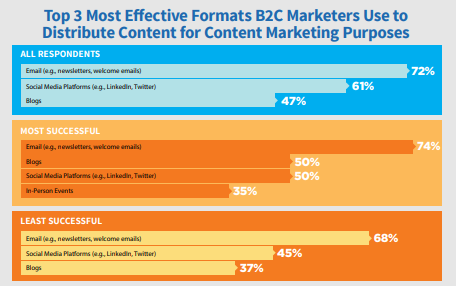
But why email marketing?
Because it generates the highest return on investment (ROI). You can start by using automated welcome/confirmation emails, event emails, promotional emails, or newsletters for improved engagement, conversions, and eCommerce sales.
You can choose to personalize your email marketing campaigns by creating content to suit a given market segment by gender, age, etc., or you can do it the Marriott way.
In one of their Year In Review emails, Marriott International would send their readers’ performance data. For instance, they would indicate the total number of nights customers have stayed in their hotels, the total number of earned and redeemed reward points, and the total number of miles earned.
Of note, the emails did not have a call-to-action (CTA), but as a result of their unique email marketing technique, the hotel made 84% more revenue in 2014 than in 2012 and 2013.
This strategy is good for your eCommerce sales because it reinforces member loyalty.

2. Create Product or Service Guides
Now that you know the channel to use to share your content, you need a commodity to sell.
To differentiate yourself from the competition, you can take a unique approach where you use AI content writing tools to build guides for your customers. Guides are resources showing your prospective buyers how to use your products or services.
They should offer in-depth knowledge of your offering and how it can meet customers’ needs.
For instance, you can create content with information or answers to frequently asked questions, enabling you to build trust with your clients. This approach is effective in converting prospects into customers; hence, you should refrain from using the platform to sell.
The main objective of user guides is to educate users on how to use your products to solve their problems or meet their needs. Their decision to purchase will mainly be determined by how well you execute the tutorials.
To make them more appealing and interesting, ensure to display visuals in the form of infographics, photos, or videos. These tools are good at showing users how things work and look like, hence, improved eCommerce sales.
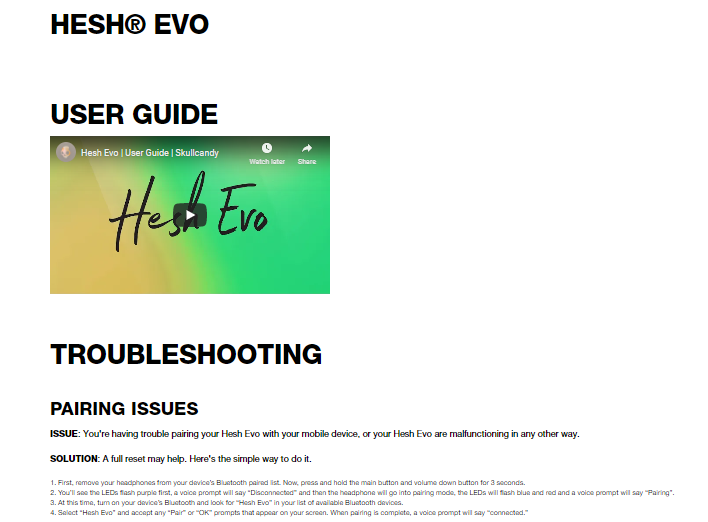
Skullcandy has a built-in support center comprising user guides and videos to help shoppers to troubleshoot issues with their products:
3. Create Product or Service Videos
There are many ways to use video marketing as a content marketing tool for eCommerce sales. You can start by creating online courses, short ad campaigns, online courses, or even in-depth webinars.
To make your video ad campaign go viral, ensure its length matches your medium. You should anticipate an impatient audience; you should tailor content to meet your customers’ low attention spans.
Many marketers are now focusing on videos as short as 2 minutes in length, but you should assess the medium or platform to customize the videos accordingly.
For instance, users are more likely to watch a 2-minute long YouTube video but would be less patient to watch the same length on Twitter.
Customized videos appeal better to your target audience, giving your brand more attention. Remember to make them catchy to stand out from the many video marketing content on the online space.
HubSpot has gained high engagement from 1-minute Facebook videos and 2-minute YouTube videos. Depending on the platform, the length and content of your videos will enable you to gain more traffic and eCommerce sales.
You don’t have to tackle everything about your products or services but offer enough value to make it worthwhile for your audience to watch, share, and visit your product page.

You can also grow your eCommerce sales by offering online courses and webinars. These are platforms where entrepreneurs can interact with real people. You can record the content of your webinars for later viewing by your audience.
If you do not want to interact with an audience, you can create a teaching series on YouTube. You can also offer a course in the following places:
- Kajabi
- Udemy
- Podia
- Pluralsight
4. Become an Expert

You can drive more traffic to your site by becoming an online hub where you present yourself as a point of reference within a given industry or space.
You don’t have to brand your content heavily, but you should do authentic research and publish information or tips related to your industry of operation.
This practice will enable customers to consult your site for questions or information, leading to better performance on Search Engine Results Pages (SERP).
You will also gain customer trust by differentiating yourself as a solution-oriented business. Since not many eCommerce outlets are employing this tactic, you will stand out as a reliable source of information, hence, improved traffic and high eCommerce sales.
You can start by answering user questions without trying to sell your products or services, unless where the issue is related to your business. For instance, you can respond to questions on Quora.com or Reddit.com, or comment on relevant videos and blog posts.
You can also reach out to related podcasts to do an interview on topics relevant to your products and services or issues affecting your industry. Alternatively, you can start a podcast of your own; the latter approach may require more time commitment.
This strategy will help enhance your credibility, increasing your audience, conversions, and sales.

Shopify’s podcast, Thank God It’s Monday (TGIM), targets people who are eager to start a new week, mainly entrepreneurs. Such shows are normally short (30-45 minutes) and can enable eCommerce sites to connect with listeners by telling success stories of entrepreneurs.
5. Offer FAQ Sheets and Measurement Scales
Once you identify commonly asked questions from your customers, you should create a resource where they can locate answers without having to chat, call, or email you.
FAQs can cover many things depending on the nature of your business, including the following:
- What is your return policy?
- Do you offer free shipping?
- Do you have a free trial period?
- Can I get a refund if I am not satisfied with the service?
- Do you offer discounts or a loyalty program?
You can update the FAQ sheet once you identify new commonly asked questions. This tip helps eCommerce sites to establish trust with their customers, hence, improved conversions and sales.
If you run a website where you sell clothes, shoes, furniture, tools, and bulky and long equipment, you should provide a measurement scale in the form of a size chart. Some of the common questions customers may ask about these products are:
- Will it fit in me in terms of height, length, or width?
- Will it fit in my car, house, office, etc.?
- Will it be too heavy to carry by myself?
A size chart helps you to automatically respond to all personal issues customers would have with your weight- and measurement-specific products. It helps shoppers with their decision-making, leading to better conversions and eCommerce sales.
Snowboard provides a size chart to help its customers with choosing snowboards online:
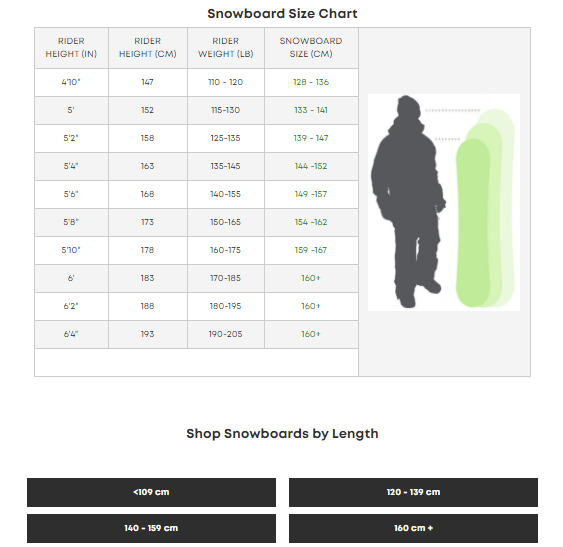

6. Share Customer Stories
When you share testimonials, reviews, or customer stories, you are presenting evidence to your potential customers that their peers like your product or service.
This an effective content marketing strategy for eCommerce sales because it is cheap, real, and authentic. You are basically letting your customers create and market the content for you.
You can get original, inspirational customer stories from customers who have rated your products well or who have left positive reviews on your product pages. You can ask them to provide more information about their experience and permission to share their testimonials.
Many eCommerce sites execute this strategy by creating competitions where they encourage customers to share their videos, pictures, or stories, leading to product promotion and improved sales. A competition between fans helps with engagement, shares, and brand loyalty.
Coca-Cola implemented this tactic through the Winter Olympics’ ‘Coke Games’. Customers were encouraged to take videos of themselves partaking in games like Speed Sipping and Bottle Cap Hockey. They would then share the videos on Coke’s Facebook page to qualify for a prize.

The company also attracted more users by asking their customers to share photos of themselves holding coke bottles with their names on the labels. The ‘Share a Coke’ campaign was highly personalized, hence, increased engagement, conversions, and sales.
7. Adopt appropriate Content Marketing Tools
Not everything about executing content marketing for eCommerce sales is manual. A part of it requires you to take advantage of the available tools to automate the process and understand content marketing trends, making it easy to reach many people and attend to multiple issues at once
To advance your content marketing skills and generate high eCommerce sales and return on investment (ROI), you can start with the following tools:
- Alexa – This tool enables you to view the interests of your target audience, where they spend most of their time online, the brands they consider, the keywords they utilize when buying, among others. It is an effective tool for analyzing and determining user behavior, helping you to customize your content and products to suit the needs of your target audience.
- Buffer – This tool will help you with your social media shares. You can use it to write and schedule your content marketing posts for later, monitor user engagement, trends, and conversions. It is an effective resource for improving your market reach and sales.
- Canva – This tool enables non-designers to craft original graphics. For instance, eCommerce sites use Canva-created images to craft summarized content for their blogs and social media promotions.
Others include Curalate, BuzzSumo, CoSchedule, and Hootsuite.
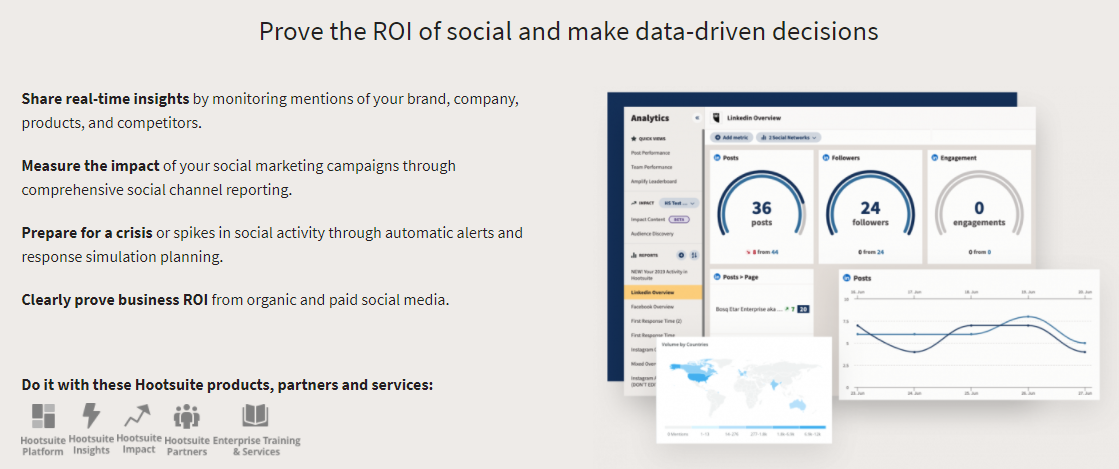
For SEO, you can consider using plugins like Rank Math and Yoast SEO to optimize your content and website for search engines and social media.
8. Use Paid Content
There are many ways to create content for your eCommerce sales and one of the trending ones is the use of influencers. You can connect with industry authorities and subject matter experts to reach larger and new audiences.
These personalities have a large social following, and their opinion about your products or services will help improve your brand image and awareness. Their followers could become your customers, contributing to improved conversions and sales.
For instance, you can target celebrities, industry influencers, and others. You should then contact them for a partnership, where you offer something of value in exchange for their promoting your content.
You can offer them sponsorship for their video creation and in return, you would get to feature a brief ad about your product or brand.
You can also hire a competent writer or blogger on platforms like Fiverr, UpWork, and ProBlogger. An experienced writer will create customized content with specific keywords that make your content rank well on search engine results pages, hence, improved eCommerce sales.

Audible uses influencer marketing by partnering with Tim Ferriss, New York Times bestselling author and investor. Ferriss runs a short podcast, the Tim Ferriss Show, to market Audible’s products and services and his favorite books.
Conclusion
Content marketing entails connecting and engaging with a given target audience by creating and distributing relevant, valuable, and consistent content. eCommerce sales are extensively using this tactic for improved conversions, SEO, and to drive traffic and sales.
While there are many ways to execute content marketing tips, this article discusses the most unique ideas, including identifying the best form of content to use, creating product or service guides and videos, and providing FAQs and measurement scales.
You should also differentiate your approach by becoming an industry expert, sharing customer stories, and using appropriate content marketing tools and paid content. These tactics will drive brand awareness, engagement, customer trust, and increased eCommerce sales.
Acowebs are developers of Woocommerce dynamic pricing that will help you add bulk discounts to products on your stores. It also developed the plugin for adding various extra product fields which is called Woocommerce custom fields, that are lightweight and fast. You can easily update your store with these add-ons and enjoy a hassle-free experience, check out the best options for additional Woocommerce product options. The latest plugin from Acowebs, WooCommerce PDF invoices, comes with top-notch UX and are used by customers across the globe.












 Login
Login
 Cart
Cart